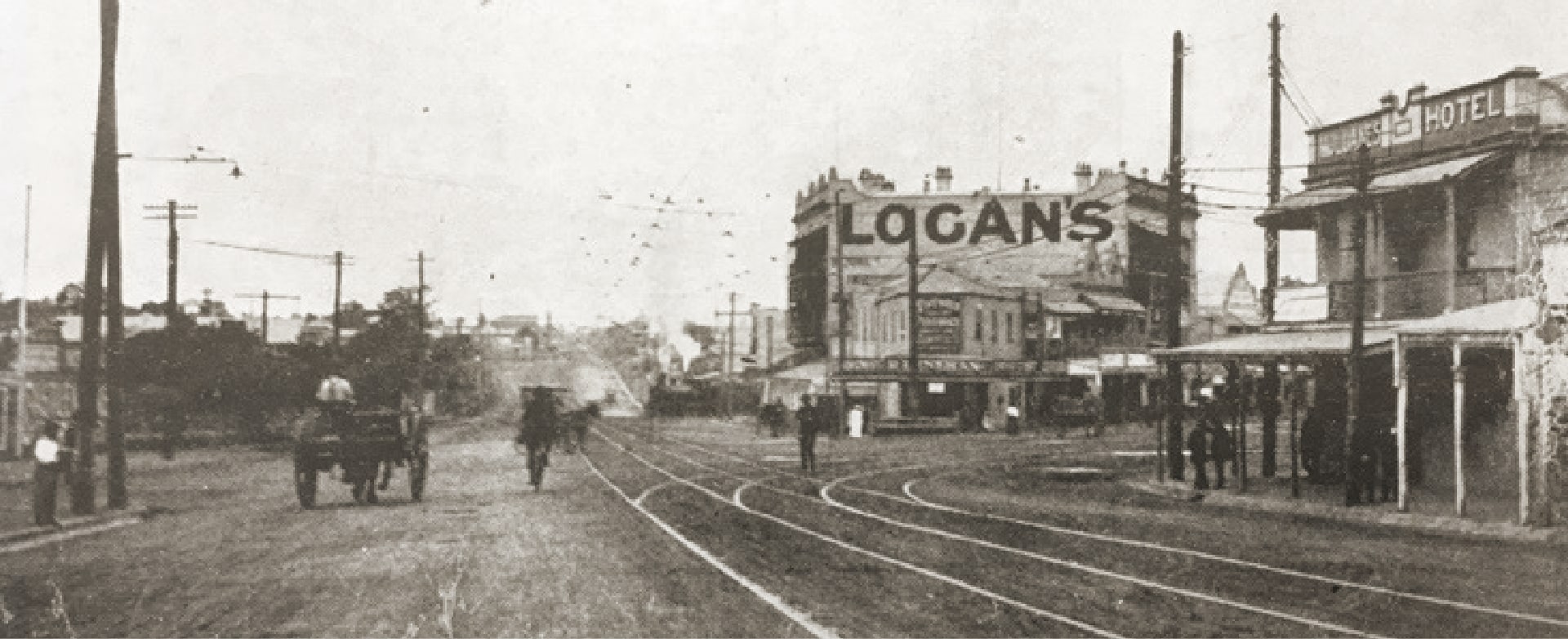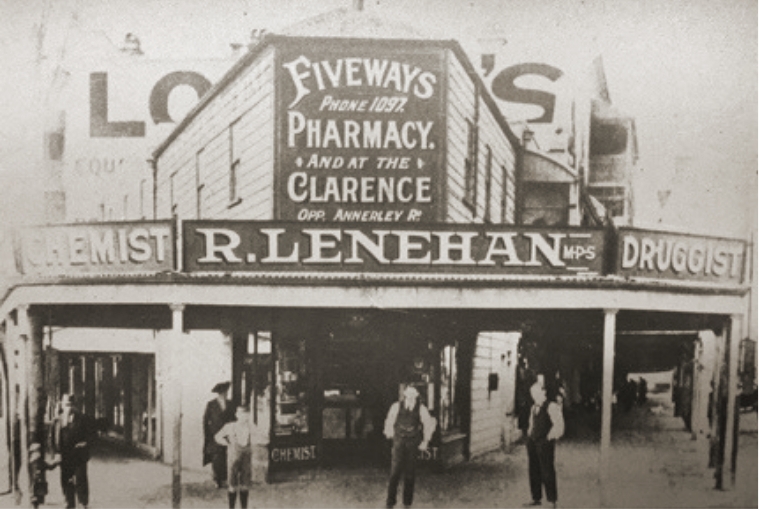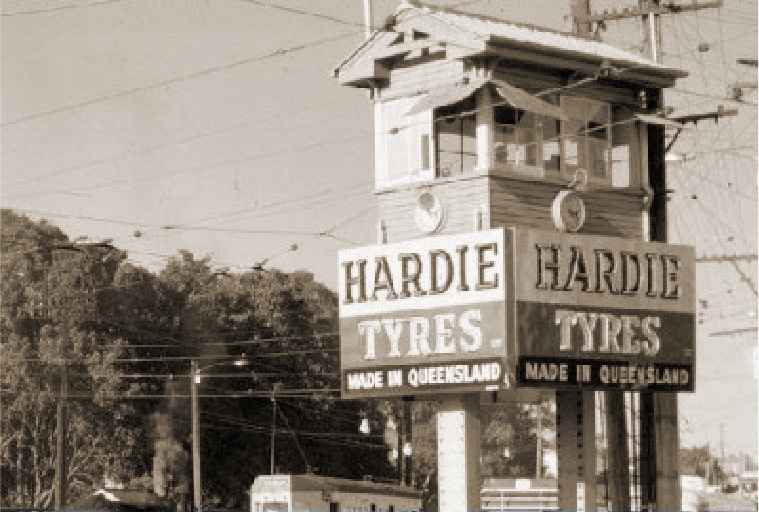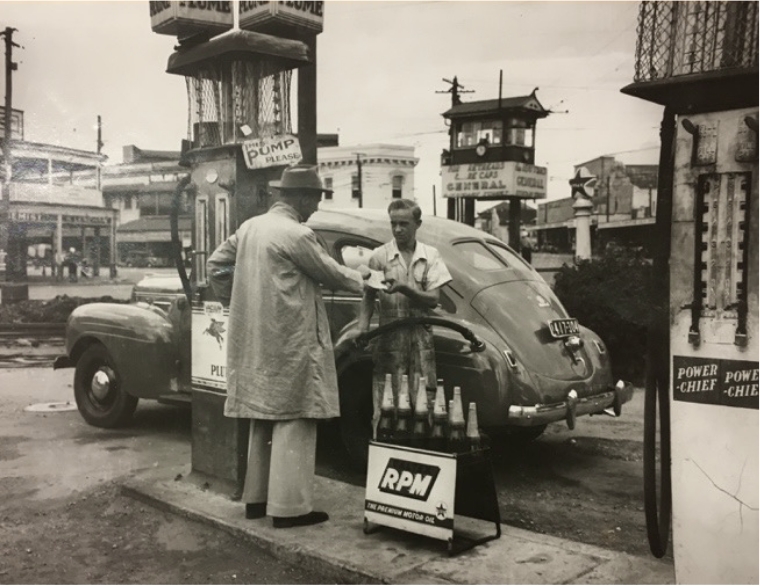Local landmarks
Several buildings have been important local landmarks for generations. Although the character of the Gabba has changed, these are reminders of important past activities in the area.
Police Station, Main Street
Fronting Main Street, the former Woolloongabba Police Station was built in 1913 to replace a cottage that had served as the local station since 1888. Designed by architect A.B. Brady, the station was provided with electricity in 1925 and sewerage the following year.
After 1934 the building became the South Coast Police District Headquarters, despite its proximity to central Brisbane, and served as an Unemployment Relief Works centre in the 1930s. The barracks facilities there closed in 1951, when the Criminal Investigation Branch (CIB) was moved to the building. From the mid-1960s the East Brisbane and Kangaroo Point police stations were merged into the Woolloongabba centre, until its closure in 1993.

Woolloongabba Police Station, c. 1921, with railway yard turntable under construction. State Library of Queensland.
The Fiveways

Stanley Street, intersection with Logan Road, c. 1921 State Library of Queensland.

Lenehan’s Pharmacy, Woolloongabba Fiveways, c. 1920s
The earliest photographs of the Fiveways intersection show horse-drawn carts and wagons alongside the tramway lines, scattered pedestrians and broad empty streets.
Even into the 1920s it seems there was little competition from motor vehicles. But as car ownership took off, so did the volume of traffic through the Gabba. Later photographs capture a sense of the busy traffic, with trams and cars forming a constant stream.

The Woolloongabba signals cabin, Brisbane Tramway Museum
Along with other major intersections in Brisbane, the Fiveways had a prominent signals cabin built in 1927. From this elevated position a signalman could observe and control trams in the vicinity. With the tram network discontinued, this local landmark was demolished in November 1969.

Refuelling at the Fiveways, c. 1949 State Library of Queensland
Stanley Street shopping
The popular tramway network brought many shoppers to retail destinations such as Stanley Street. With electric trams, from 1897, running faster and carrying more passengers, the volume of Brisbane residents moving around their city increased year upon year. As Anthony Smith writes, trams “effectively doubled the radius for convenient suburban commuting [in Brisbane] and stimulated further real estate development beyond the bounds of the traditional walking city.”
Woolloongabba was a major beneficiary of this new transport system, and developed rapidly in the 1880s and 1890s as a shopping destination. The celebrated Brisbane retailer T.C. Beirne, for example, opened a drapery store there in 1883, before moving to greater success in Fortitude Valley. A post and telegraph office was established in Logan Road in 1889, reflecting the increase in tramway traffic through the area. Woolloongabba was now a recognised stop on the route from South Brisbane to Mount Gravatt, and so developed as a transport, services and retail hub as well as a traffic throughfare and industrial neighbourhood.
This early post office was replaced in 1905 by a more ornate and attractive post office on Stanley Street, further evidence of the consolidation of the Gabba’s fortunes. This building was designed by the assistant Government Architect, Thomas Pye, and featured a dwelling for the postmaster on the upper floor. It remained in use until the mid-1990s, and was heritage listed in 2003.

